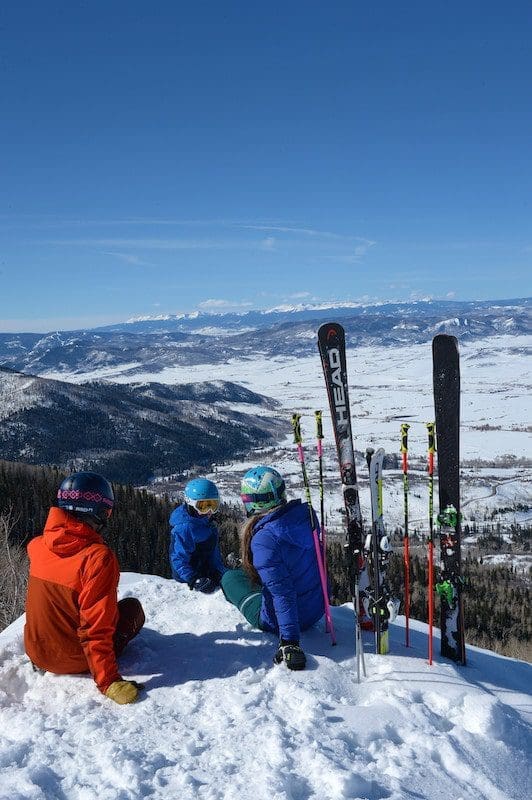A winter ski expedition is a thrilling adventure, but the key to an unforgettable experience lies in proper preparation.
As you gear up for the powdery slopes and crisp mountain air, packing strategically ensures you stay warm, comfortable, and fully equipped.
In this guide, we will walk you through the essentials that guarantee comfort, safety, and maximum enjoyment on your winter ski escapade.
Layering Essentials
As you prepare for your winter ski expedition, the importance of layering cannot be overstated. The key to staying warm and comfortable lies in the strategic combination of base layers, mid-layers, and outer shells. Start with moisture-wicking base layers that efficiently pull sweat away from your skin, preventing the discomfort of damp clothing.
InChemistry highlights that polyester stands out as a widely favored fabric for sweat-wicking clothing due to its hydrophobic nature, stemming from its petroleum-based composition. This characteristic is highlighted by a remarkably low moisture regain of merely 0.4%.
Opt for thermal materials like merino wool or synthetic fabrics that retain heat even when wet. Mid-layers provide insulation, trapping body heat to keep you warm in chilly mountain conditions. Fleece jackets or down vests are excellent choices for this purpose. Ensure that your mid-layer is breathable to prevent overheating during intense skiing sessions.
Finally, invest in a high-quality outer shell – a waterproof and windproof jacket and pants – to shield yourself from the elements. Look for garments with ventilation zippers to regulate your body temperature based on the conditions.
High-Quality Ski Gear
Ski gear serves as the backbone of your winter adventure, impacting both your performance and safety on the slopes. Start with a well-fitted helmet that meets safety standards to protect your head during falls or collisions. Ski boots play a critical role. Choose those with a snug fit for responsiveness and warmth.
According to a blog post by New to Ski, you can expect to spend about $200 on beginner-level ski boots. A pair of intermediate and expert-level ski boots will set you back by $300 and $500, respectively.
Consider investing in skis tailored to your skill level. Whether you’re a beginner or an advanced skier, the right equipment can enhance your experience.
Additionally, prioritize quality bindings that securely attach your boots to the skis, providing control and stability. Poles should be the correct length for your height, aiding balance and maneuverability. Regularly maintain your ski gear, ensuring bindings are adjusted, and edges are sharp, for optimal performance and safety.
Protective Goggles and Sunglasses
Clear vision is paramount on the slopes, making goggles and sunglasses indispensable accessories. Goggles shield your eyes from wind and snow. In addition, the National Eye Institute notes that prolonged exposure to UV rays induces alterations in lens proteins. This contributes to the development of cataracts and a deterioration in eyesight. Ski goggles also protect from these harmful UV rays.
Opt for goggles with anti-fog technology to maintain visibility in varying conditions. Choose lenses that suit the light conditions of your skiing destination – darker lenses for bright days and lighter ones for overcast weather. On sunny days, sunglasses with polarized lenses become essential.
They reduce glare and enhance contrast, allowing you to discern variations in the snow terrain clearly. A secure strap or retainer for both goggles and sunglasses prevents them from getting lost during intense runs.
Hand and Foot Warmers
Maintaining warmth in your extremities is crucial for an enjoyable skiing experience. Pack hand and foot warmers to combat the biting cold. These small, disposable heat packs can be inserted into gloves and boots, providing a steady source of warmth for several hours.
Activated by exposure to air, hand and foot warmers are convenient and easily portable. This ensures that your fingers and toes remain comfortably warm throughout your skiing adventure.
Remember to place these warmers strategically – near the toes and on the back of your hands – for maximum effectiveness. Having spare warmers in your backpack ensures you can replace them as needed, guaranteeing a toasty experience on even the coldest days.
Hydration and Nutrition
Skiing is a physically demanding activity that requires sustained energy and hydration. Packing a hydration system or water bottle is essential to prevent dehydration, especially at high altitudes.
Choose an insulated water bottle to keep your drinks from freezing in colder temperatures. In addition to staying hydrated, fuel your body with energy-rich snacks.
Portable, non-perishable options like energy bars, nuts, and dried fruits are convenient choices that can be easily consumed on the go. Timing your snacks to coincide with breaks in your skiing sessions helps maintain optimal energy levels, ensuring you can conquer the slopes with enthusiasm.
Boot Dryers
Often overlooked, but incredibly important, professional boot dryers for wet footwear are a must-have for any skiing expedition. Wet boots not only lead to discomfort but can also pose a risk of frostbite in extreme conditions. Portable boot dryers use gentle heat to remove moisture from the interior of your boots, leaving them dry and warm for your next adventure.
Compact and easily packable, these devices are a game-changer, ensuring your boots are ready for action each day. Simply insert the boot dryers into your ski boots overnight, and wake up to dry, warm footwear. According to CozyWinters, these dryers enhance your comfort while extending the lifespan of your boots by preventing the growth of mold and bacteria.
Emergency Essentials
While skiing is an exhilarating activity, it’s essential to be prepared for unexpected situations that may arise in the mountainous terrain. Packing a small emergency kit can make a significant difference in ensuring your safety. Include items such as adhesive bandages, antiseptic wipes, pain relievers, and blister treatments.
A multi-tool is a versatile addition to your emergency kit, assisting with gear adjustments and minor repairs. A compact flashlight or headlamp is crucial in case daylight fades faster than expected.
Familiarize yourself with the resort’s safety protocols and carry a trail map to help prevent getting lost. Preparing for the unexpected allows you to focus on the thrill of skiing while knowing you can handle any challenges that come your way.

In conclusion, a successful winter ski expedition hinges on meticulous preparation. From layered clothing to high-quality gear, protective eyewear, and essential warmth solutions, each element contributes to a seamless and enjoyable experience on the slopes.
Hydration and nutrition ensure sustained energy, while boot dryers prove indispensable for comfort. Emergency preparedness adds an extra layer of security to the thrill of skiing.
By prioritizing these key aspects, adventurers can immerse themselves in the breathtaking beauty of winter landscapes, confident in their readiness for any challenge. It’s not just a ski trip; it’s a journey blending excitement and safety for an unforgettable winter escapade.

